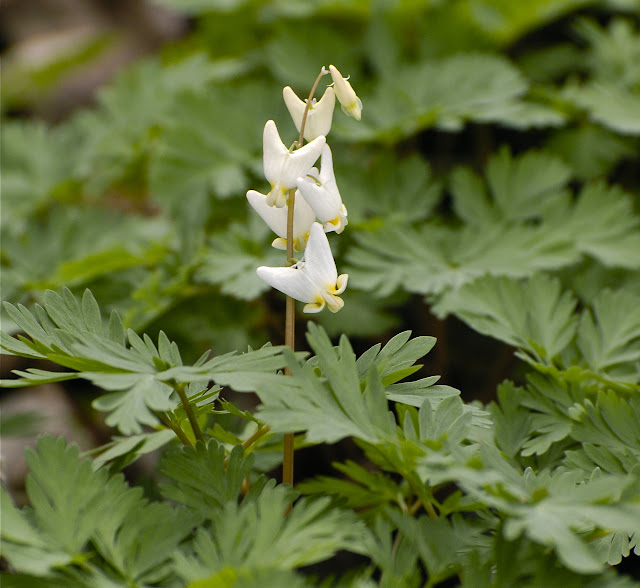Yellow throats and butter butts. Sounds kinda kinky, huh? Like somebody has been having a bit too much personal fun among the dairy products.
Relax…what we're dealing with here is warbler-speak.
Spring is not only wildflower time in southwest-Ohio, it's also when the colorful squads of tiny warblers arrive hereabouts as they migrate northward to their summer nesting ranges. Slim-bodied birds, most the size of chickadees, but with longer beaks—dressed in all sorts of patches and patterns of yellow, gray, slate blue, black, white, brown, orange—striped and non-striped. And of course, most males and females of each species sport different looks.
Breathtaking, confusing troupes of feathered rainbows, flitting about the treetops, their often musical calls ringing through the greening vernal woods. At once both a birder's delight and bane, if you're the sort who insists on putting a name to things and checking off those little boxes on your life list. Personally, I'm content to remain happily bewildered, capable of identifying some of the warblers I see and hear, and delighted just as much by those that leave me baffled.
Here along the river, I saw my first warbler of the season a couple of weeks ago—a so-called "butter butt," or as it's more rightly known, a yellow-rumped warbler. As if warbles weren't perplexing enough, this particular species comes in two variations—the "Myrtle" and the "Audubon's." The former is the one most often seen in the eastern U.S. and the latter mostly confined to the western states. Occasionally, though, one decides to go visiting and fly with his non-majority kin. Not often; what the bird guides refer to as a "casual" visitor. But I saw an Audubon's Yellow-Rumped here a couple of years ago and it mystified me no end until the obvious eventually penetrated.
Unfortunately, the recent butter-butt (a Myrtle variation) didn't hang around long enough for me to make a photo. But another bird I did manage to photograph—albeit not too well—was a yellow-throated warbler—a bird with a noted preference for sycamores and riverine woodlands.
 Warblers are mostly insect eaters, and therefore not much interested in hanging around the feeders with the titmice and goldfinches. But this bright little yellow-throat kept making regular passes at the suet block, though it had to contend with downy, hairy, and red-bellied woodpeckers who viewed such behavior as tantamount to thievery by a gaudy-dressed interloper.
Warblers are mostly insect eaters, and therefore not much interested in hanging around the feeders with the titmice and goldfinches. But this bright little yellow-throat kept making regular passes at the suet block, though it had to contend with downy, hairy, and red-bellied woodpeckers who viewed such behavior as tantamount to thievery by a gaudy-dressed interloper.
Rain is predicted for today and tomorrow, and Friday through at least the weekend. So Thursday will likely be my only chance to get into the bigger woods up the road and better assess the local warbler situation. They're small, quick, and not easy to photograph…but I want to see if I can't add a few warbler portraits to my files.
———————



























